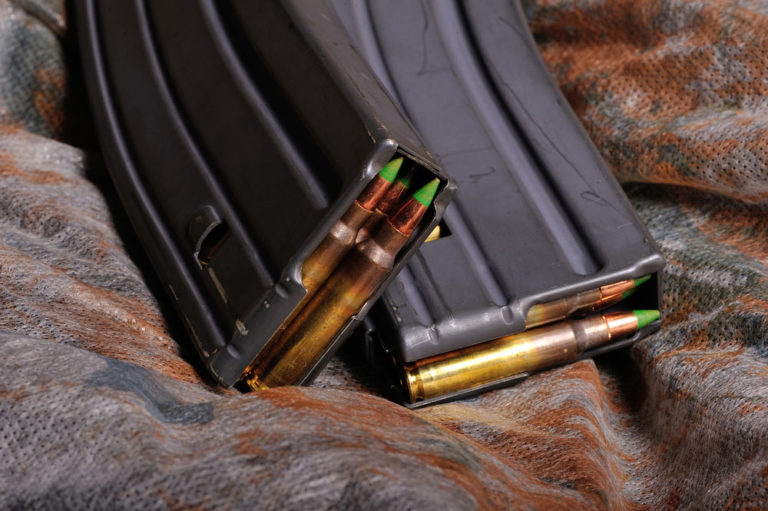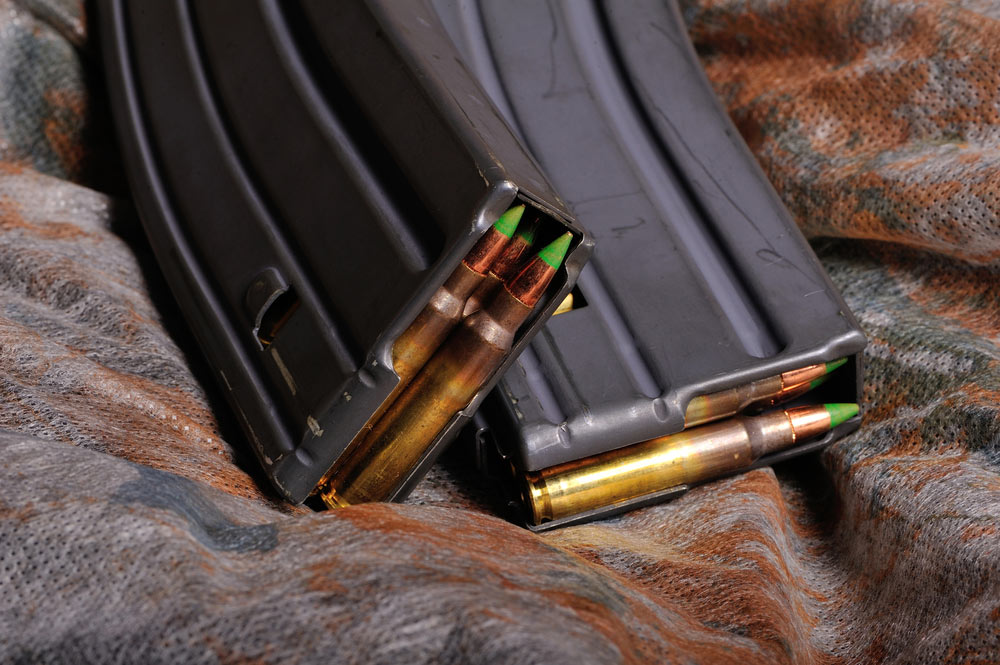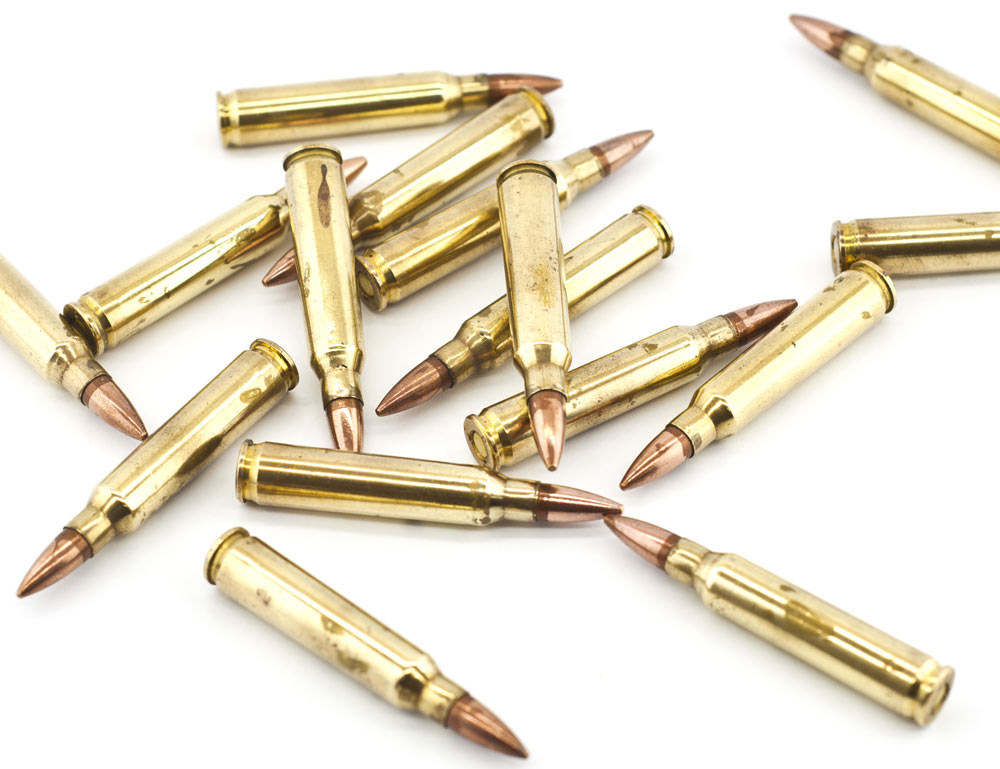

At the time this cartridge was adopted for military use in the United States, we were in the middle of a great state of change.
WWII was over with the US forces and it's allies finally rolling over the Nazi powers in Germany, and then ending the conflict in Asia by dropping two newly developed and terrifying bombs on Nagasaki and Hiroshima. The ink was hardly dry on the surrender documents when we found ourselves embroiled on the Korean peninsula. We were in the process of changing from piston driven aircraft to the new fangled jet technology.
The military also went through the throes of developing a new cartridge and a new rifle to handle it, and then replaced the M1 Garand chambered for the .30-06 with the M-14 rifle chambered for the 7.62×51 NATO cartridge. About the only thing this change did that was positive, was to finally achieve a NATO standard cartridge. The other issues, those of weight, power, and rate of fire, were essentially very little different from its predecessor.
In the late 50s, the ArmaLite Company along with some others were working on a much smaller high velocity cartridge/assault rifle combination to address the shortfalls in the 7.62×51 cartridge and the M-14 rifle. Initially they considered using the commercially available .222 Remington cartridge, but it was apparent that the cartridge was too small to meet army established requirements.
After considerable experimentation, Remington came out with a similar but larger round, calling it the .223 Remington. This cartridge, named the 5.56×45 by the military, along with ArmaLite's M16 rifle, were adopted by the U.S. Military in 1963, and Remington introduced the civilianized version of the cartridge to the public a year later in 1964.
The military determined that an 8-man team armed with the M16/5.56×45 combo would have the same firepower as an 11-man team armed with the M14/7.62×51. The difference was due to the size and weight differential between the two armaments. NATO agreed in 1977 to accept the 5.56×45 round as a NATO standard, with some minor variations in loading and bullet design.
The acceptance of the M16 and its 5.56×45 cartridge was not without controversy. Initially, the rifle was criticized frequently after its introduction to the battlefield in RVN. It had a habit of jamming at most inopportune times. Some changes were made and most of those criticisms went away.
There has been a continuing debate among the military as to the wisdom of eliminating much of the marksmanship training received by the military recruits, relying much more on firepower than on marksmanship, particularly at longer ranges.

This debate continues, but the arguments are not against the 5.56×45 cartridge per se, but more against the training and employment doctrines. Those arguments will, most likely, continue until us old timers have all died off and no one remembers long range marksmanship training as it used to be.
As a matter of interest, the 5.56×45 and the .223 Remington, while very similar, are not precisely identical. The military version is loaded to somewhat higher pressures than is the civilian version. There are some slight variations in some commercial chamber dimensions, and if the military 5.56×45 ammunition is fired in a .223 Remington chamber, SAAMI established pressure maximums can sometimes be exceeded.
While I personally have never heard of any real problems from this situation, firing military ammo in commercial .223 chambered rifles is not a good idea.

Next Step: Get your FREE Printable Target Pack
Enhance your shooting precision with our 62 MOA Targets, perfect for rifles and handguns. Crafted in collaboration with Storm Tactical for accuracy and versatility.
Subscribe to the Gun Digest email newsletter and get your downloadable target pack sent straight to your inbox. Stay updated with the latest firearms info in the industry.









Close, but not quite corrct. SO, 20 rounds of full- auto capability is not a ‘significant’ difference from 8 round clips at semi-auto, huh?:
First, the M-14 did give considerably more firepower than did the M-1 Garand due to the 20 round M-14 magazine,and fullauto capability, opposed to the 8 Round En-Block clip used by the Garand, which was slower to load/reload those fewer rounds.
Second, the Armalite rifle was the “Armalite AR-15” developed by Stoner while working for the airplane company. The original AR-15 had a LOT of problems, like splitting barrels because his original design used a steel liner in an aluminum tube.
The rifle TESTED by the U.S. Gov’t. was named the “XM-15”, for experimental rifle. It was not named the M-16 untill AFTER it was adopted.
It was not untill much later that they added the foreward assist- due to dirty powder and jungle conitions you were often forced to JAM the round into the chamber so you could fire the weapon- and the chrome-lined barrel that at least made it work, mostly.
By the way, it went to the U.S Air Force before it went to the Army since Stoner had “friends in hoigh places”… Please do a littel more research, and ignore anything from wipedia as unreliable.
Back in the day I was buying my first model 700 in ADL. Just before the government approved the 223 I looked at the spec’s for the 223/5.56 and found them wanting compared to the 222 Rem magnum round. That gun was (and is) a special prize in my collection.
50 years ago ? Accuracy of 3/4 MOA! Guns today are just now achieving that production accuracy level.
Reference to Viet Nam. I carried two extra bolt carrriers and a chamber brush.. The environment ate our guns and our boots. We were shooting over a thousand rounds a week without good cleaning. If the cong smelled our cleaning fluid or smokes hey would attack. After chroming key parts the problems lessened.